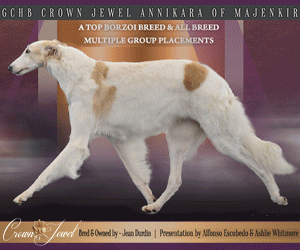The Evolution of the Dog Show
252 – February 2017
By Amy Fernandez
 AKC had 105 breeds arranged into six groups back in 1948 when Clifford Hubbard reit- erated the unspoken truth, “The official classifications of the kennel clubs of the world cannot be accepted as conclusive.” The primary obstacle, as he explained, came down to, “The multiplicity of dog breeds (there must be at least 850 dis- tinct breeds and varieties altogether) with their sub-varieties and strains, makes any effort to classify them an extremely hazardous enterprise; the only guaranteed result being controversy.” Worse yet, there’s always more coming. “Thus we have a new flood of breeds (aberrant albeit purebred varieties) that don’t fit into any of the established groups,” he concluded.
AKC had 105 breeds arranged into six groups back in 1948 when Clifford Hubbard reit- erated the unspoken truth, “The official classifications of the kennel clubs of the world cannot be accepted as conclusive.” The primary obstacle, as he explained, came down to, “The multiplicity of dog breeds (there must be at least 850 dis- tinct breeds and varieties altogether) with their sub-varieties and strains, makes any effort to classify them an extremely hazardous enterprise; the only guaranteed result being controversy.” Worse yet, there’s always more coming. “Thus we have a new flood of breeds (aberrant albeit purebred varieties) that don’t fit into any of the established groups,” he concluded.
The dog is a genetic outlaw forever defying efforts to lock its freeform morphology into any rigid system. Every classification method attempts to combine scientific exactitude and practicality. There is no perfect formula. At some point, it just gets messy. The actual challenge for kennel clubs is deciding where to compro- mise for optimum results. However, something much bigger than breed groupings was on the table at AKC during those endless debates, discussions, and special committee investigations. Many aspects of this puzzling arrangement are better understood as a reflection of AKC’s long struggle to accept a disquieting and somewhat subversive notion. Like it or not, popular culture was destined to play a tremendous role in shaping this sport.
The underlying premise of dog shows, the comparison of breeding stock, was a proven method for breed development long before kennel clubs distilled it into a formal sport. Purists maintain that breed judging is the only thing that counts. Most rating systems acknowledge that contextual viewpoint by calculating both breed and group rankings which frequently feature different dogs. AKC’s devotion to this reductionist stance remains embed- ded in our show regulations which don’t require clubs to offer competition beyond BOB.
From the get-go, AKC focused on perfecting a system to award championships through breed competition. To them, interbreed competition directly contradicted the purpose of the sport, ar- guably turning the process into a meaningless display. If clubs chose to stage those “special” classes, it was strictly off the record. Their attitude was to ignore it and hope it went away.
Click here to read the complete article252 – February 2017
Short URL: https://caninechronicle.com/?p=119798
Comments are closed











